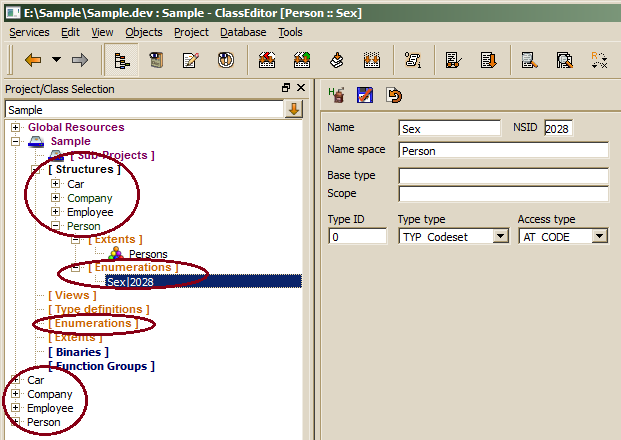Defining an ODABA object model
Defining an object model mainly includes defining user defined data types. In general, there are two ways of building an object model. The suggested way is to create a terminology model and create the data model from the terminology model. The Object Model Build Wizard provides extended support creating a consistent model from terminology model definitions.
There is also the possibility to start directly with building the data model and creating the terminology model (documentation) afterwards (or never). Since building an object model is a rather complex task, a data type wizard has been provided. Experienced users also may create and edit data types directly in the ClassEditor using appropriate definition forms.
Typically, the data model will be created in the resource project, which has been created when initializing the resource database by calling the ClassEditor the first time. The ODABA model distinguishes between data type definition (Structures, which represent complex data types and Enumerations) and classes, which are specialized complex data types, that allow implementing functions for a data type.

Object model resources are shown in the class tree, which represents complex data types as complex data types (Structures), but also as classes (lower list). Enumerations might be defined as complex data type property (as in the Person definition) or as global enumerations.
One might, of course , also define the complete data model using ODL (Object Definition Language). Since in the script environment, there is no support for checking consistency and selecting proper technical terms, this is a rather difficult procedure and not really suggested. ODL might be used for exporting and reimporting data definitions, but not really in the application development.

